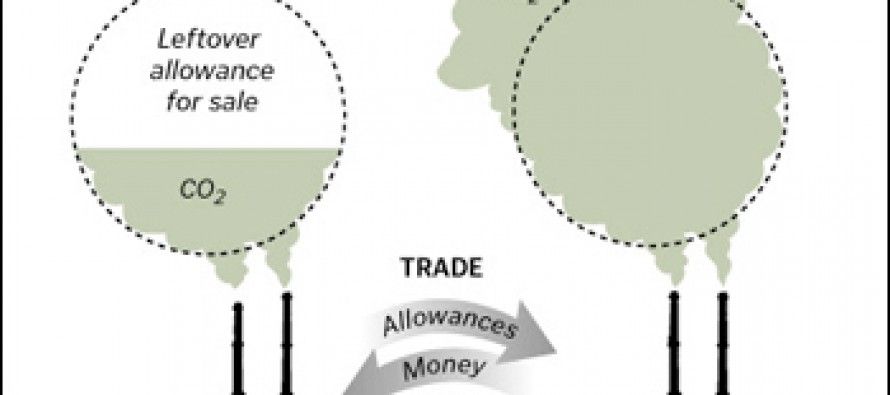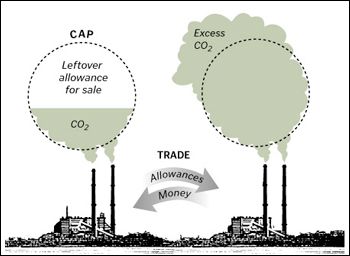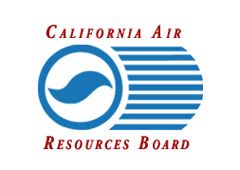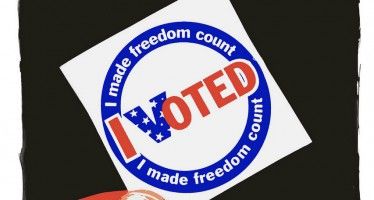Critics say CARB botching key part of cap-and-trade program

 Bloomberg New Energy Finance (Bloomberg NEF) has accused the California Air Resources Board of a serious problem: double-counting industrial pollution emissions under its cap-and-trade program.
Bloomberg New Energy Finance (Bloomberg NEF) has accused the California Air Resources Board of a serious problem: double-counting industrial pollution emissions under its cap-and-trade program.
Bloomberg NEF, a media enterprise focusing on the energy sector, isn’t the only credible entity to make this complaint about a key part of California’s push to force a shift from fossil fuels to cleaner-but-costlier sources of energy.
CaliforniaCarbon.info, ICIS, BGC Environmental Brokerage Services and CleanTechnica.com have all raised concerns about CARB double-counting emissions. They say this has resulted in an excess of pollution permits issued under its cap-and-trade program. The major concern of pollution permit traders is that the permits are becoming illiquid in price because there is an oversupply of permits. This means pollution permits can’t be fully liquidated into cash and must be held to 2020 or 2026 before they can be sold at the same price they were purchased for.
The goal of a cap-and-trade program is to use market forces to achieve policy goals, in this case fewer emissions. But the problem with a cap-and-trade pollution permit market where you can only sell permits for a loss or hold them long-term is that this isn’t a true market where gains and losses can occur. CaliforniaCarbon.info (no link, subscription required) reports secondary market prices for emissions allowances fell by 20 percent from June 3 to Nov. 19.
How cap-and-trade is supposed to work
 Instead of fining air polluters, California’s cap-and-trade program requires air polluters to buy permits – called allowances – in an auction for every ton of pollution emitted into the air. Only large industries have to buy allowances right now. But electric and water utilities and public transportation will also have to do so by 2015. Once allowances are purchased, they can be traded from one polluter to another or with speculators in a secondary investment market. The total tonnage of pollution emitted is the “cap” and the number of allowances traded is the “trade.”
Instead of fining air polluters, California’s cap-and-trade program requires air polluters to buy permits – called allowances – in an auction for every ton of pollution emitted into the air. Only large industries have to buy allowances right now. But electric and water utilities and public transportation will also have to do so by 2015. Once allowances are purchased, they can be traded from one polluter to another or with speculators in a secondary investment market. The total tonnage of pollution emitted is the “cap” and the number of allowances traded is the “trade.”
The target for California by 2050 is to be 80 percent below the amount of tons of carbon dioxide (C02) emitted in 1990 — even as the population doubles. In 1990, California had 29.76 million people. The state’s population is expected to grow to 60 million people by 2050, the target date set by CARB for reduction of air pollution back to 20 percent of 1990 levels.
Under California’s Global Warming Solutions Act of 2006 (Assembly Bill 32), the tonnage of carbon dioxide (C02) emitted is what is capped and traded. The program is intentionally designed to reduce the number of permits gradually each year by 2020 to provide an economic incentive for industries to reduce pollution. But critics says what is happening is that CARB is selling too many allowances because it is overcounting emissions.
According to Bloomberg NEF, CARB released emissions data on Nov. 4 for its cap-and-trade program designed to reduce air pollution. CARB reported unadjusted emissions rose 2 percent from 2011 to 2012. Bloomberg NEF responded: “The raw data, however, is misleading as it includes several aspects of double-counting. After adjusting for these our analysis shows like-for-like emission of C02 (carbon dioxide) remained flat at 350.9 million tons across both years.”
Bloomberg NEF added that California’s cap-and-trade system would be 7 percent below the expected emissions cap in 2015 and there would be no undersupply of allowances until 2020. Bloomberg NEF says participants in the cap-and-trade program would be compelled to have a strategy to hold their emissions allowances “long” until 2026 before they could possibly become marketable. William Nelson, a Bloomberg NEF senior analyst, stated: “Flat or falling emissions shows that the California carbon market will remain in a state of substantial oversupply throughout the decade.”
At its Nov. 14 meeting, CARB’s Emissions Market Assessment Committee adopted a policy of price containment for pollution permits by auctioning excess permits. Independent policy analysts have asserted that if CARB does not put a ceiling on permit prices that gasoline prices at the pump could climb to $5 per gallon. But CARB is more concerned about “predictability of greenhouse gas emissions” than a spike in gasoline prices, or skyrocketing electricity prices as occurred during the 2000-01 energy crisis.
Double-counting not OK in a production chain
 Bloomberg NEF claims that double-counting originates because of the way in which emissions are reported for natural-gas companies that supply gas-fired power plants where the gas in burned to generate electricity. Bloomberg NEF counts this as a single emission while CARB allegedly counts it as two emissions.
Bloomberg NEF claims that double-counting originates because of the way in which emissions are reported for natural-gas companies that supply gas-fired power plants where the gas in burned to generate electricity. Bloomberg NEF counts this as a single emission while CARB allegedly counts it as two emissions.
Double-counting is prone to occur in a production chain where the same fuel is counted twice (see definition of carbon double-counting here). For example, the U.S. Environmental Protection Agency specifically states production of aluminum is not included in industrial emissions because of the problem of double-counting in the manufacturing process.
According to CaliforniaCarbon.info (no link, subscription required), CARB admitted it might have overcalculated emissions by double-counting electricity and emissions for natural gas. BGC Environmental Brokerage Services have raised the question of whether this double-counting might be considered fraud. But David Clegern of CARB denies his agency’s count is misleading. He did not, however, respond to my e-mailed questions.
Will CA’s flawed cap-and-trade program go way of Europe’s?
 A one-sided cap-and trade market of unavoidable price losses and pollution permits that can’t be readily resold is not a true market and so is unlikely to achieve its desired goal. Such basic flaws have badly undermined Europe’s cap-and-trade market, which also appears to have a huge oversupply of pollution allowances.
A one-sided cap-and trade market of unavoidable price losses and pollution permits that can’t be readily resold is not a true market and so is unlikely to achieve its desired goal. Such basic flaws have badly undermined Europe’s cap-and-trade market, which also appears to have a huge oversupply of pollution allowances.
But California’s cap-and-trade program has helped with one state problem. While it has not yet reduced air pollution by even one ton, it has collected $396 million in auction revenues. To the dismay of California environmental groups, those funds were used to help plug part of the state general fund budget deficit.
Related Articles
DMV workers speak out
JUNE 17, 2010 By ANTHONY PIGNATARO For reasons that shouldn’t surprise anyone, employees of the California Department of Motor Vehicles
$3.9 Million Pension Demands Sunshine
JUNE 9, 2011 By K. Lloyd Billingsley Pension payments such as the $3.9 million in supplemental funds to Samuel Downing,
CA Dems move to remake state voting
Pursuing a long-held dream of maximizing voter turnout, California Democrats have coalesced around legislation that would fundamentally transform the experience —



